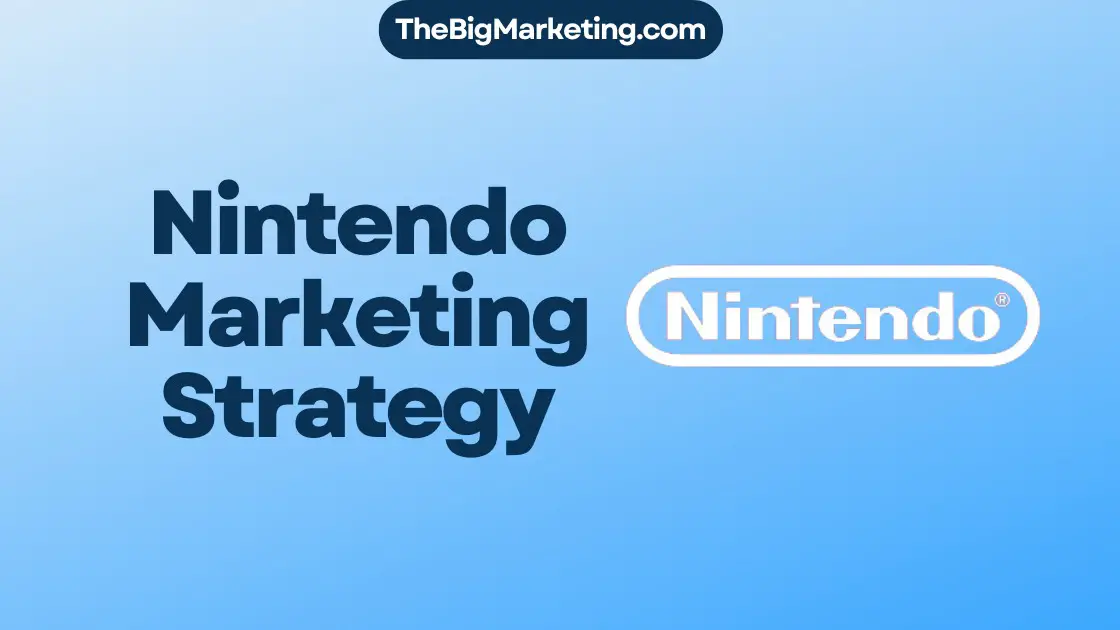Indie games, with their unrestricted creativity and innovation, offer a breath of fresh air in the gaming industry. These games are created by individual developers or small teams who bring their unique visions to life without the support of major publishers. However, despite their artistic merit, many indie games struggle to achieve widespread success due to a lack of effective marketing strategies.
In this article, we will provide a comprehensive guide on marketing strategies for indie games in 2024. We will explore various tactics and techniques that indie developers can employ to increase the visibility and reach of their games. From App Store Optimization (ASO) to influencer marketing, we will cover it all.
Indie game marketing involves a multi-faceted approach that encompasses both online and offline channels. Through the implementation of targeted advertising, strategic partnerships, and fostering strong user relationships, indie game developers can maximize their chances of success.
Join us as we delve into the world of indie game marketing and uncover the strategies that can help indie developers thrive in the competitive gaming landscape.
Key Takeaways:
- Indie games are created by individual developers or small teams without the support of major publishers.
- Effective marketing strategies are essential for the success of indie games.
- App Store Optimization (ASO) is crucial for improving visibility in app stores.
- Influencer marketing can help reach a wider audience without a hefty advertising budget.
- Engaging with the media and fostering user relationships are important for generating attention and building a dedicated fanbase.
What are Indie Games?
Indie games, short for independent games, are games created by individual developers or small teams without financial support from publishers. These games offer a refreshing alternative to mainstream titles, as they are driven by the developers’ unrestricted creativity and innovation. Without the operational and creative restrictions imposed by publishers, indie game creators have the freedom to explore new ideas and push the boundaries of game design.
Indie games are known for their unique gameplay mechanics, captivating storytelling, and distinctive art styles. They often bring fresh perspectives and experimental approaches to the gaming industry, offering players a diverse range of experiences that may not be found in traditional AAA titles. Examples of successful indie games include Braid, World of Goo, Super Meat Boy, and Minecraft, each showcasing the creative potential of independent game development.
Indie games have gained popularity among gamers for their ability to deliver immersive gameplay, thought-provoking narratives, and artistic expressions that resonate with players on a deep level. These games have proven that innovation and creativity thrive outside the traditional game development landscape, sparking a new era of game design and storytelling.
In summary, indie games are a vibrant and influential sector of the gaming industry, driven by independent developers who have the freedom to create games that challenge conventions and captivate players with their unique visions.
The Evolution of Indie Gaming
The roots of indie gaming can be traced back to the early 1990s when shareware distribution models gained popularity. In the late 2000s, online distribution services further fueled the growth of indie games. Today, indie developers rely on crowdfunding, finding publishers, and cultivating supportive communities for funding. Unlike mainstream games, indie games primarily target online sales and leverage casual games propelled by social media. While some indie games achieve significant financial success, many serve as important milestones in developers’ careers.
During the 1990s, shareware distribution models emerged as a key factor in the rise of indie gaming. Shareware allowed developers to offer a portion of their games for free, enticing players to purchase the full version. This model provided indie developers with a platform to showcase their talent and gain recognition.
In the late 2000s, the advent of online distribution services revolutionized the indie gaming industry. Platforms like Steam, GOG, and Itch.io provided a global audience and a direct means of selling indie games. This accessibility allowed developers to reach players all over the world without the need for physical distribution.
Today, indie developers employ various strategies to fund their projects. Crowdfunding platforms like Kickstarter and IndieGoGo have become popular avenues for raising funds, allowing developers to gather support and financial backing from enthusiastic gamers. Additionally, finding publishers who are willing to invest in indie games has become a viable option for many developers.
Indie gaming has also seen the rise of supportive communities that foster creativity and collaboration. Developers actively engage with their audience, seeking feedback, suggestions, and even financial support. These communities provide not only funding but also a platform for sharing ideas, obtaining valuable insights, and building a loyal fan base.
Unlike mainstream games that often rely on physical retail distribution, indie games predominantly target online sales. They leverage the power of social media platforms to generate buzz and reach a broader audience. Indie developers understand the importance of building a brand and cultivating a dedicated following through engaging online content and community interaction.
Although financial success is a goal for many indie developers, it is not the sole indicator of accomplishment. Indie games often serve as important milestones in developers’ careers, showcasing their creativity, innovation, and artistic vision. They provide an opportunity for developers to explore new gameplay mechanics, narrative structures, and art styles without the constraints imposed by larger studios.
Evolution of Indie Gaming: Key Milestones
To better understand the evolution of indie gaming, let’s take a look at some key milestones that have shaped the industry:
| Year | Event |
|---|---|
| 1993 | Release of “Doom” by id Software, popularizing shareware distribution |
| 2005 | Launch of Xbox Live Arcade, providing a platform for indie game distribution on consoles |
| 2008 | Introduction of the Humble Indie Bundle, pioneering pay-what-you-want pricing and cross-platform distribution |
| 2012 | Success of “Minecraft” by Mojang, showcasing the immense potential of indie games |
| 2013 | Release of “Papers, Please” by Lucas Pope, highlighting the power of storytelling in indie gaming |
These milestones represent significant moments in the evolution of indie gaming, each contributing to the industry’s growth and influence.
As indie gaming continues to flourish, developers must navigate the challenges of standing out in a crowded market and attracting players. Effective marketing strategies, as explored in the following sections, are crucial for indie game success in 2024 and beyond.
The Challenge: Why Do Indie Games Fail?
While success stories like Minecraft demonstrate the incredible potential of indie games, a vast majority of such games struggle to find widespread success. Statistics reveal that the average indie game on platforms like Steam sells for less than $10 and attracts only a handful of buyers. This sheds light on the crucial importance of implementing effective marketing strategies to reach the discerning audience of indie gamers. In this section, we will explore the main reasons why indie games fail and provide insights into how aspiring developers can overcome these challenges.
1. Lack of Visibility and Discoverability
One of the key factors contributing to the failure of indie games is a lack of visibility and discoverability. With thousands of games being released each year, standing out in a saturated market is a daunting task. Without proper marketing and promotional efforts, indie games can easily get lost in the sea of offerings, leaving developers struggling to attract attention from potential players. To combat this, developers need to focus on implementing robust marketing strategies that encompass various channels and platforms to increase their game’s visibility.
2. Insufficient Marketing Budget
Unlike big-budget AAA titles backed by established publishers, indie developers often operate on a limited budget. This financial constraint can severely impact the marketing efforts of indie games, leading to minimal exposure and reduced reach. Indie developers need to be resourceful and maximize the impact of their limited marketing budgets by leveraging cost-effective strategies such as social media marketing, influencer partnerships, and community engagement.
3. Ineffective ASO (App Store Optimization)
App Store Optimization (ASO) plays a crucial role in driving organic downloads for indie games. However, many developers lack a comprehensive understanding of ASO practices, resulting in poor visibility within app stores and limited downloads. By neglecting ASO techniques such as keyword optimization, appealing visuals, and engaging descriptions, indie games miss out on potential exposure and fail to attract the right audience.
4. Poor Market Research and Understanding
An essential aspect of any successful game marketing strategy is a thorough understanding of the target market. Indie games that fail often suffer from a lack of proper market research, leading to mismatched expectations and unmet player preferences. By conducting in-depth market research and analyzing player behavior, developers can tailor their games to cater to specific audience needs, increasing the likelihood of success.
5. Lack of Unique Selling Points
In a highly competitive market, indie games need to have unique selling points (USPs) that differentiate them from the crowd. Games that fail often lack distinct features, innovative gameplay mechanics, compelling narratives, or standout visual aesthetics. Developers should focus on creating a game that offers something fresh and captivating to capture the attention of players.
6. Inadequate Testing and Polishing
Releasing an indie game without sufficient testing and polishing can lead to negative reviews, poor user experiences, and ultimately failure. Games that fail often suffer from technical issues, bugs, or inadequate gameplay balance. By investing time and effort into thorough testing and polishing, developers can ensure that their games deliver a seamless and enjoyable experience to players.
With an understanding of the common reasons behind indie game failures, developers can now explore effective marketing strategies to overcome these challenges and increase the chances of success.
Start with focusing on ASO (App Store Optimization)
App Store Optimization (ASO) plays a crucial role in increasing the visibility of indie games, as over 50% of app discoveries occur through searches. To maximize your game’s chances of being found, it’s essential to tailor its name, keywords, and description to align with app store algorithms. Additionally, optimizing your game for different platforms like Google Play and iOS can further enhance its visibility.
When optimizing your game for ASO, consider the following strategies:
- Game Names: Choose a compelling and unique name that reflects the essence of your game. Incorporate relevant keywords into your game name to improve its discoverability in search results. However, ensure that the name remains catchy and memorable for potential players.
- Descriptions: Craft engaging and informative descriptions that highlight the unique features and gameplay of your game. Use attention-grabbing phrases to entice potential players and communicate the value proposition of your game.
- Screenshots: Utilize high-quality screenshots that showcase the visual appeal and gameplay elements of your game. Select screenshots that capture the essence of your game and entice users to explore further. Consider featuring exciting moments, stunning graphics, and compelling characters.
By leveraging ASO techniques and optimizing your game for app stores, you can significantly improve its visibility and attract more potential players to try it out. Stay tuned for the next section, where we’ll delve into the importance of focusing on soft launch strategies for indie games.
Focus 100% on your soft launch
A soft launch is a critical phase in the development and marketing of indie games. It offers developers the opportunity to test their game with a limited audience, gather valuable feedback, and make necessary refinements before the full launch. By focusing 100% on your soft launch, you can ensure that your game is ready for a wider release and increase your chances of success.
The Benefits of a Soft Launch
During a soft launch, you can gather feedback from real players who are experiencing your game for the first time. Their insights can help you identify and fix any issues or bugs, improve gameplay mechanics, and enhance the overall user experience. By addressing these areas early on, you can increase the chances of positive reviews, word-of-mouth recommendations, and higher user satisfaction.
A soft launch also provides an opportunity to gauge the market’s interest in your game. Through data analysis and player feedback, you can assess the game’s potential for success, identify target demographics, and make informed decisions on future marketing strategies.
Executing a Successful Soft Launch
To ensure a successful soft launch, consider the following key steps:
- Select the Right Test Market: Choose a test market that closely resembles your target audience. This will help you gather relevant feedback and insights that align with your intended player base.
- Define Clear Objectives: Set specific goals and metrics for your soft launch. This will allow you to measure the game’s performance and determine whether it meets your expectations.
- Engage with Players: Actively communicate with your soft launch players to encourage feedback and engagement. Provide them with channels for reporting issues and suggestions, and be responsive to their comments and concerns.
- Analyze Data: Monitor key performance indicators (KPIs) during the soft launch period, such as retention rate, average revenue per user, and user engagement metrics. Use this data to identify areas for improvement and inform your decision-making process.
- Iterate and Refine: Based on the feedback and data collected, make necessary adjustments and improvements to your game. Continuously iterate and refine your game to ensure it meets the expectations of your target audience.
By focusing on your soft launch and taking the time to gather feedback, analyze data, and refine your game, you can increase the chances of success when it comes to the full launch. Utilize this opportunity to fine-tune your game and ensure it resonates with your target audience.

| Benefits of Soft Launch | Steps to Execute a Successful Soft Launch |
|---|---|
|
|
Get your game reviewed
Leveraging influencer marketing is an effective way to reach a broader audience without a hefty advertising budget. By connecting with influencers whose followers align with your target demographic, you can generate valuable game reviews and increase your game’s visibility on various platforms.
Developers can partner with influencers to propose game reviews on blogs, YouTube channels, or streaming services. These reviews serve as trusted recommendations for their followers and can significantly impact the success of your indie game.
Benefits of Game Reviews
Game reviews provide multiple benefits for indie game developers:
- Increased exposure: When influencers review your game, their audience gets introduced to your game, expanding your reach to a wider group of potential players.
- Credibility and trust: Influencers have built trust with their audience, and a positive review from an influencer can enhance your game’s credibility and increase the likelihood of players trying it out.
- SEO boost: Game reviews often include keywords related to your game, which can improve your game’s search engine optimization (SEO) and help it rank higher in relevant search results.
To effectively leverage influencer marketing for game reviews, consider the following:
- Identify relevant influencers: Research influencers who focus on reviewing indie games and have a significant following within your target audience. Look for influencers who align with the genre, art style, or gameplay mechanics of your game.
- Reach out with a personalized pitch: Craft a compelling pitch tailored to each influencer, highlighting the unique aspects of your game that would resonate with their audience. Offer them a free copy of the game and any additional materials necessary for the review.
- Provide press kits: Create a press kit with high-quality screenshots, gameplay videos, key features, and any relevant information about your game. This will help influencers create comprehensive and engaging reviews.
- Follow up and engage: After the review is published, engage with the influencer and their audience by responding to comments, thanking them for their review, and offering support or updates for your game.
Remember, building a positive relationship with influencers can lead to long-lasting partnerships and continued exposure for your game.
Consider the example table below highlighting the benefits of game reviews:
| Benefits of Game Reviews | Description |
|---|---|
| Increased exposure | Game reviews by influencers introduce your game to a wider audience, boosting visibility and potential player reach. |
| Credibility and trust | Positive reviews from trusted influencers enhance the credibility of your game and build trust with potential players. |
| SEO boost | Game reviews often contain keywords related to your game, improving its search engine optimization and visibility in relevant searches. |
Leverage the power of word of mouth
When it comes to marketing a game, one of the most powerful strategies is harnessing the potential of word of mouth. Encouraging existing users to become ambassadors for your game can have a significant impact on its success. By providing a great user experience that motivates players to invite their friends and family, you can generate positive word of mouth and increase organic user acquisition.
Word of mouth is highly influential in the world of gaming. Players trust the recommendations of their friends and family more than traditional advertising. When someone hears about a game from a trusted source, they are more likely to give it a try. This organic form of promotion can lead to a ripple effect as players share their excitement and enthusiasm with others.
To leverage the power of word of mouth effectively, it’s essential to focus on creating a game that is worth talking about. Develop a high-quality game with engaging gameplay, compelling storylines, and captivating visuals. Prioritize user experience, ensuring that every interaction is seamless and enjoyable. Encourage players to share their experiences with others by implementing social sharing features within the game.
Additionally, consider implementing referral programs that incentivize players to invite their friends to join the game. Rewarding both the referrer and the new player with in-game perks or bonuses can further encourage word of mouth promotion. Create a sense of community within the game so that players feel connected and motivated to invite others to join.
Remember that word of mouth marketing is not something that can be controlled directly. However, by providing an exceptional gaming experience and actively encouraging players to share their enthusiasm with others, you can significantly increase the chances of your game spreading through word of mouth.
Key Points:
- Word of mouth is a powerful marketing strategy for promoting indie games.
- Players trust recommendations from friends and family more than traditional advertising.
- Create a high-quality game worth talking about with engaging gameplay, compelling storylines, and captivating visuals.
- Implement social sharing features and referral programs to encourage players to share the game with others.
- Highly effective in building trust and credibility
- Cost-effective compared to traditional advertising
- Reaches a targeted audience through personal connections
- Provides valuable social proof for the game’s quality
- Cannot be directly controlled or manipulated
- Relies on the subjective experiences and opinions of players
- May take time to gain momentum
- Create an exceptional gaming experience
- Implement social sharing features
- Incentivize player referrals
- Cultivate a sense of community within the game
The Power of Word of Mouth
| Benefits | Challenges | |
|---|---|---|
| Benefits of Word of Mouth |
|
|
| Strategies to Encourage Word of Mouth |
|
Conclusion
Word of mouth is a valuable asset when it comes to promoting indie games. By focusing on delivering an outstanding gaming experience and actively encouraging players to share their enthusiasm with others, developers can tap into the influential power of word of mouth marketing. Embrace this organic form of promotion and watch as your game gains traction and reaches an expanding audience.
Engage with the media to generate attention
Developers looking to generate attention for their indie games should actively engage with the media. By reaching out to local YouTube channels, press release platforms, and tech news websites, developers can increase their chances of gaining press coverage and expanding their game’s visibility.
To effectively engage with the media, developers should create a micro landing page specifically designed to capture attention. This landing page should include a captivating game trailer that showcases the unique features and gameplay of the indie game. By providing app store links, social media links, screenshots, and game review excerpts, developers can offer the media a comprehensive overview of their game.
Creating a visually appealing landing page helps to grab the attention of potential media outlets and influencers. By providing them with easy access to relevant information, developers can increase the likelihood of getting their game featured in articles, videos, and other forms of media content.
Remember, a well-crafted landing page coupled with engaging media assets can significantly support the game’s visibility and attract the attention of a wider audience. Developers should view media engagement and press coverage as essential components of their overall marketing strategy, helping to drive awareness and generate interest in their indie games.
Conclusion
Effective marketing strategies play a pivotal role in the success of indie games. In 2024, developers need to focus on various tactics to increase visibility and maximize their game’s potential. App Store Optimization (ASO) ensures better discoverability, while soft launches allow for valuable feedback and fine-tuning. Leveraging game reviews and influencer marketing expands the game’s reach, while word of mouth and user engagement generate organic growth.
Social media, forums, and cross-promotion create buzz and attract a wider audience, while nurturing user relationships fosters long-term loyalty. Lastly, active participation in relevant events exposes the game to industry professionals and enthusiasts, opening doors to partnerships and further exposure.
By implementing these 10 effective marketing strategies for indie games in 2024, aspiring developers can navigate the competitive gaming landscape and increase the visibility and chances of success for their innovative creations. Remember, success in the indie gaming world comes not only from creating a great game but also from effectively promoting and marketing it.
FAQ
What are indie games?
Indie games are games created by individual developers or small teams without financial support from publishers. They offer unrestricted creativity and innovation, often characterized by unique gameplay mechanics, storytelling, and art styles.
How has indie gaming evolved?
Indie gaming has evolved from the early 1990s when shareware distribution models gained popularity to the late 2000s when online distribution services fueled further growth. Today, indie developers rely on crowdfunding, finding publishers, and cultivating supportive communities for funding.
Why do indie games often fail to achieve widespread success?
Many indie games struggle to achieve success due to the lack of effective marketing strategies. Statistics show that the average indie game on platforms like Steam sells for less than $10 and moves only a few copies.
How important is App Store Optimization (ASO) for indie games?
ASO is crucial for indie game visibility as over 50% of app discoveries occur through searches. Developers should tailor game names, keywords, and descriptions to align with app store algorithms and utilize engaging screenshots and attention-grabbing phrases.
What is a soft launch and why is it important?
A soft launch allows developers to test the game with a limited audience, gather feedback, and refine the game before a full launch. It is a crucial step in fine-tuning the game based on user feedback and ensuring it is ready for a wider release.
How can developers get their game reviewed?
Developers can leverage influencer marketing by connecting with influencers whose followers align with their target demographic and proposing game reviews on platforms like blogs, YouTube channels, or streaming services.
How can word of mouth help indie games succeed?
Encouraging existing users to become ambassadors for the game can generate positive word of mouth and increase organic user acquisition. Providing a great user experience that motivates players to invite friends and family is key.
How can developers engage with the media to generate attention for their indie game?
Developers can gain press coverage by reaching out to local YouTube channels, press release platforms, and tech news websites. Creating a micro landing page that includes a game trailer, app store links, social media links, screenshots, and game review excerpts can support visibility.
What are the key points to remember about effective marketing strategies for indie games?
Effective marketing strategies for indie games include ASO, soft launches, reviews, word of mouth, social media engagement, forums, cross-promotion, user relationships, and event participation. These strategies help increase visibility and chances of success in the competitive indie gaming landscape.






